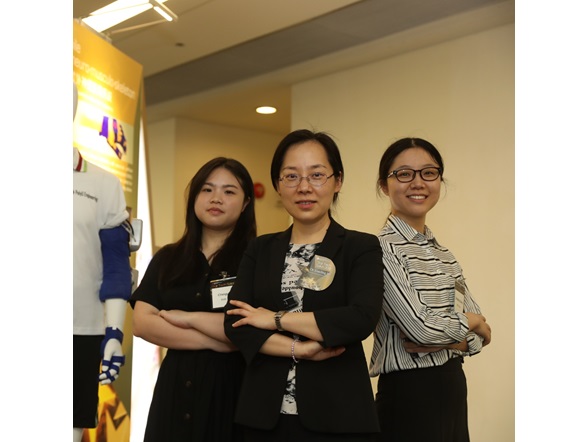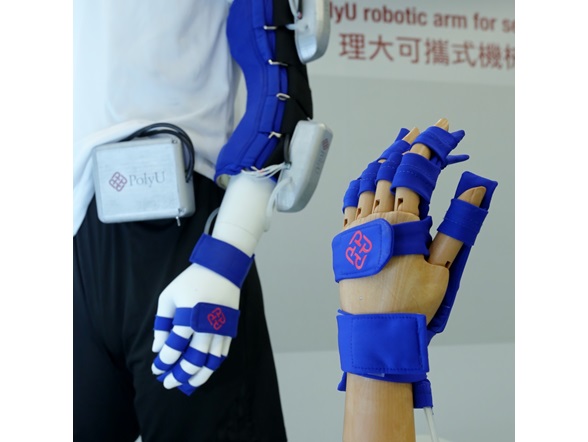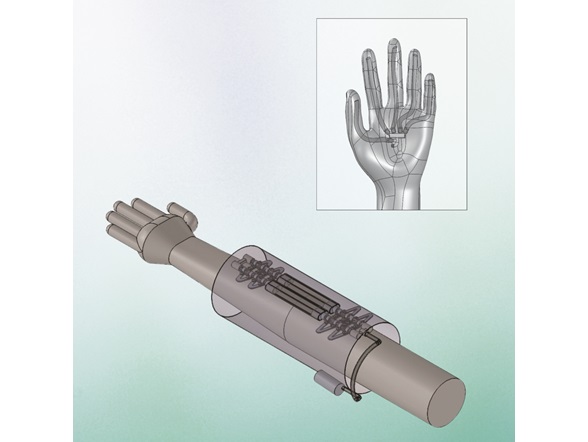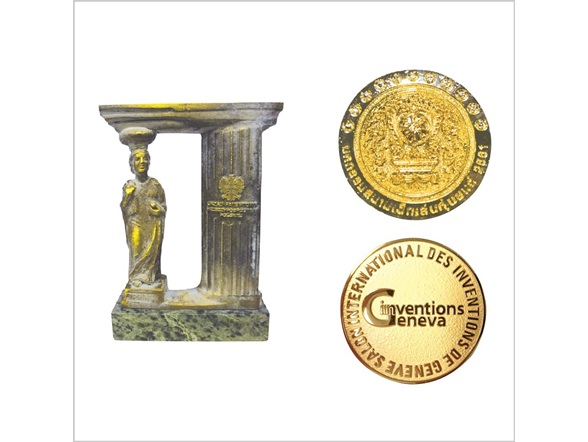It is estimated that 17 million people around the world experience stroke every year, meaning someone somewhere in the world will have a stroke every two seconds. Over three quarters of post-stroke patients report arm weakness, making it difficult for them to take care of themselves.
[1] In Hong Kong, there are about 25,000 new stroke cases every year.
[2] Most stroke survivors can resume some degree of mobility after intensive and long-term rehabilitation training. However, the demand for such rehab services in public healthcare facilities can be overwhelming and most patients don’t have access to such training as often as they should. As a result, Dr Xiaoling Hu and her research team from the Department of Biomedical Engineering developed the Mobile Exo-neuro-musculo-skeleton, a portable, lightweight robotic arm that effectively provides rehab training and is so easy to use that patients can operate of their own accord at home. In the trial, all subjects report better movement and coordination, alongside reduced spasticity.
Exoskeleton and soft robot
The robotic arm combines all three technologies currently used in rehabilitation training, namely exoskeleton, soft robot, and neuro-muscular electrical stimulation (NMES). Exoskeleton is the typical robotic arm we have in mind – made of rigid materials that provide support while robotic parts give mechanical forces to aid movement. But exoskeleton could be heavy and uncomfortable to wear. Soft robots are made with flexible materials, such as air-filled or liquid-filled pipes, to simulate muscles. Soft robots are lightweight, but tend to be very bulky. Both exoskeleton and soft robot require high electrical power to drive their motors or pumps, so that they are not exactly portable and their use is restricted in healthcare facilities.
The research team thus tried to find ways to get the best of both worlds. To begin with, they minimize the size and thickness of the exoskeleton, so as to reduce weight and increase wearing comfort. Then they incorporate artificial muscles driven by a low-power air pump to provide mechanical forces. The resulting elbow component weighs only 200 grams and the wrist/hand component only 100 grams. They can be worn together or separately for different rehabilitation purposes. Better still, the robotic arm is covered in washable, breathable and UV-protective fabric to maximize wearing comfort.
NMES technology
One principle in post-stroke rehabilitation is to stimulate the brain to re-wire itself. When one part of the brain is damaged, other parts can be trained to take up the task with repeated training. “In NMES therapy, the system senses the patient’s impulse in trying to move a muscle and then apply an electric impulse to contract that muscle. That helps the brain connect the action with that thought, re-train the muscle and build strength. Thus, we incorporated our patented NMES technology in the robotic arm – when electrical impulses are sent to the muscle, the soft robotic parts will generate mechanical forces to aid movement further,” added Dr Hu. Research shows that rehab training with combined NMES and external mechanical forces is 40% more effective than applying external mechanical forces alone.
Trial results
The robotic arm can also be connected to a smartphone app that outlines the training prescribed by therapists and records the real-time training data to keep track of the progress. In the trial, all 10 stroke patients who have performed 40 hours of training with the robotic arms reported better muscle coordination, wrist and finger movement, and lower muscle spasticity. Dr Hu said, “It’s light, compact, comfortable, responsive and very easy to use. With a 12V rechargeable battery that provides enough electricity for four hours of operation, this robotic arm is perfect for additional training in between clinical rehab sessions in the comfort of patients’ own home, or in fact, anywhere and anytime they want.”
In Apr 2019, the Mobile Exo-neuro-musculo-skeleton won a grand award, a gold medal and a special merit award in the 47th International Exhibition of Inventions of Geneva, Switzerland.






